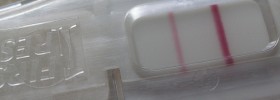New babies bring joy, excitement, and a variety of life changes. During pregnancy budding parents-to-be devour books on what to expect during gestation and maybe even a little bit about newborns. It’s pretty common to get so caught up in the miracle of pregnancy that those moms-to-be forget to look into postpartum details, especially those related to their own care.
A lot of mothers are taken by surprise when weeks after birth they find themselves moody and still sporting maternity clothes. Bleeding often lasts for several weeks after birth, sometimes more than a month. Mothers who delivered by cesarean may experience discomfort at the incision site for an exceptionally long time. Back and muscle aches are far from uncommon, as the body readjusts to a non-pregnant figure.
There is no question that the process of pregnancy and birth offers a beautiful, miraculous experience in countless ways. However, along with all that beauty there is a laundry list of new responsibilities, hemorrhoids, spider veins, aches, pains, and a whole new body to contend with.
A lot of women imagine that they will give birth and magically return to their normal, everyday selves within days. Thanks to the deluge of celebrity moms flaunting postpartum lingerie shoots before most ladies have finished their maternity leave, the confusion surrounding this delicate time is not at all surprising. However, just as pregnancy and birth are a process, so is the healing time that follows.
It is important for new mothers to take care of themselves during the first few months after birth. Ideally, the first four to six weeks should be entirely focused on rest and healing. Breastfeeding mothers should nurse their baby as much as possible, as this builds supply, helps the uterus to shrink, and burns calories. Exercise is not recommended during this healing period. Though many mothers feel like they are ready to get back to their normal lives a few weeks following birth, the body is still healing for up to 10 weeks.
The hormone, relaxin, which expands and loosens the joints and muscles to allow for an easy childbirth, is still pumping during those early post-pregnancy weeks. As a result, too much stretching and moving could result in a lot of aches and pain. Even worse, it is likely counterproductive. Other hormones, related to mood and physical function, are working to regulate themselves after the massive fluctuations related to birth and pregnancy.
To ensure the best possible healing and prevent a multitude of future problems, spend the first few weeks after baby arrives resting, drinking water, and eating a balanced diet. There is generally a natural weight loss immediately following birth, as long as the mother sticks to a good diet, the weight will stay off. However, the hips, waist, and stomach may remain a bit larger than normal for several weeks. Up to 66 percent of women still have some separation of their vertical abdominal muscles at six weeks postpartum.
Failing to eat a balanced diet following birth could cause the body to go into survival mode, bringing the metabolism to a screeching halt. Drinking plenty of water and eating the right amount of calories, 2000 for women who are not breastfeeding and an around 2500 for those who do, is the best way to prevent this from happening. At around eight to ten weeks, most mothers can introduce or resume a regular exercise routine without issue.








Connect